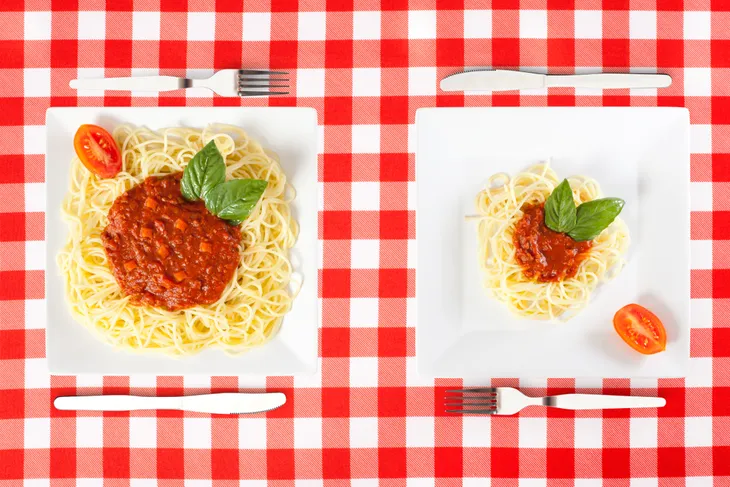One very common reason why we overeat has to do with portion sizes. It’s easy to take in hundreds of excess calories in a mindless nosh session, but if you’re looking to shed fat, you’ll have to put a stop to the tendency to overindulge.
Here are 10 tips for keeping those portion sizes under control…
Never Eat From the Box
It’s easy to get in the mindless habit of “insert hand, remove cookie, put in mouth, and chew.” However, if you put a sensible portion on a plate and tucked the box away in the cupboard, you’ll be less likely to become the Cookie Monster. So make a habit of dividing your snacks up into single-serving containers or zippered baggies—that way you can’t devour the entire box in one sitting.
Know Your Bowl or Plate Size
It makes sense that people tend to consume more calories when they eat from bigger plates and bowls. Why? Because the serving size seems small by comparison. However, if you serve portions on dessert sized plates and bowls, you’ll eat far less.
Use Veggies as Filler
If you tend to devour large servings at dinner time, bulk up that stir fry or pasta sauce with non-starchy vegetables to fill you up with fewer empty carbohydrates, fats, and calories.
Dim the Dinner Lighting
Studies show that when the lighting is bright, you tend to consume food at a faster pace—thus eating more. So do yourself a favor and dim the lights before dinner.
Brush Your Teeth After Meals
You’re much less likely to go back for a second helping if you brush your teeth and floss directly following meals.
Leave Pots in the Kitchen
When that heaping pot of pasta or casserole dish of lasagna is staring you in right in the face it’s tempting to reach for another plate. That’s why I make a point of portioning servings out, then wrapping the rest up and putting in the fridge.
Walk to the Store for Sweets
Let’s face it; if you have to walk to the store for a chocolate bar or the bakery for a slice of cake, you’re probably less likely to venture out. However, if you really want it, at least you go in some physical activity before and after.
Keep Healthy Foods Front and Center
Often if you tuck that bag of chips in a cupboard, it won’t be on your mind every evening because it won’t be staring you in the face. Instead, put fruit and veggies in the forefront so you’ll snack on those first.
Focus on Meals
That means turn off the computer and television during meals so you don’t end up mindlessly shoveling food down.
Use Visual Examples
You won’t always have a food scale handy to measure out that cup of yogurt of chicken breast. Instead, rely on visual examples—for instance, use the size of your palm to measure meat, your fist to measure a cup of rice, and a baseball to measure a half cup of pasta.













